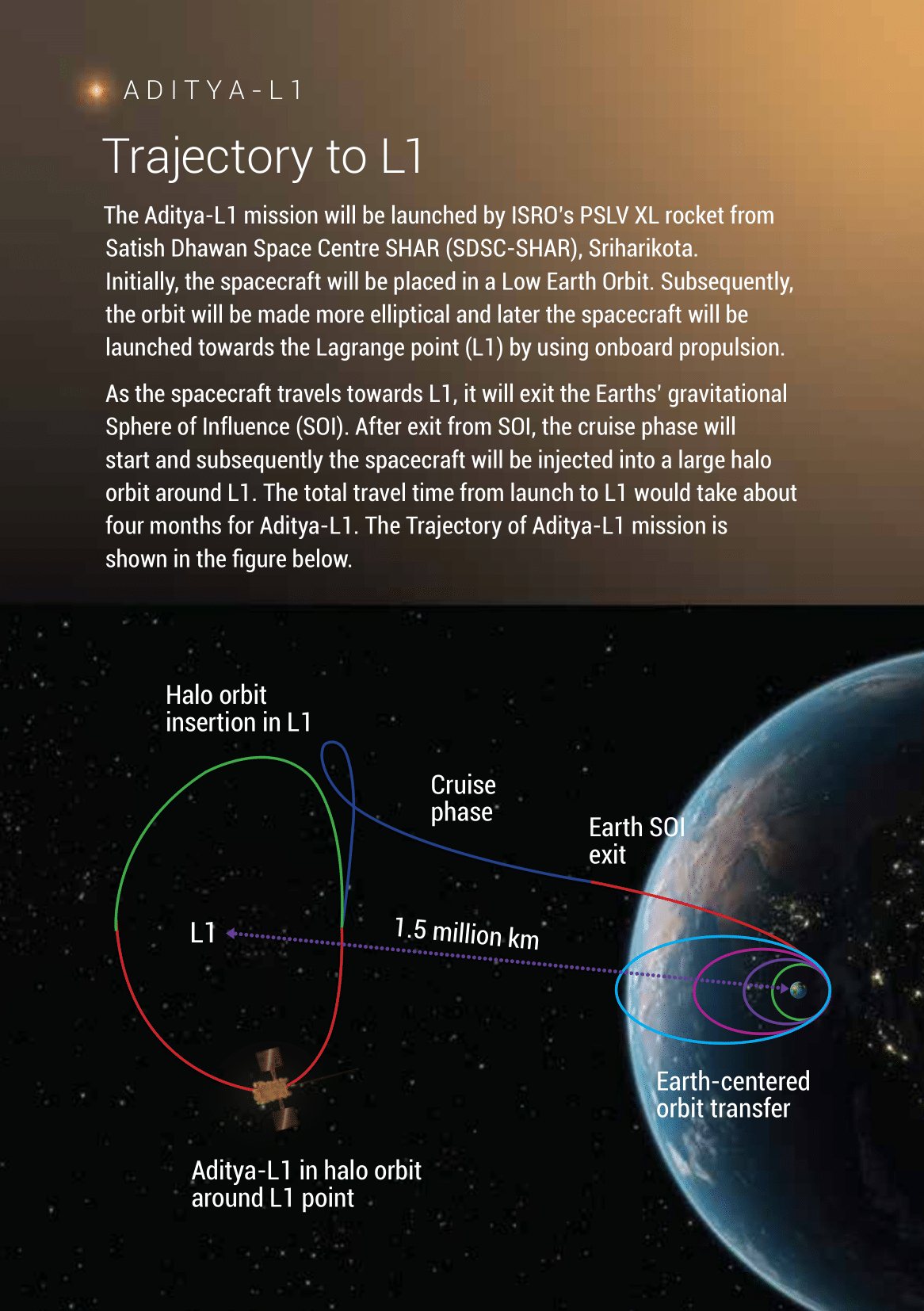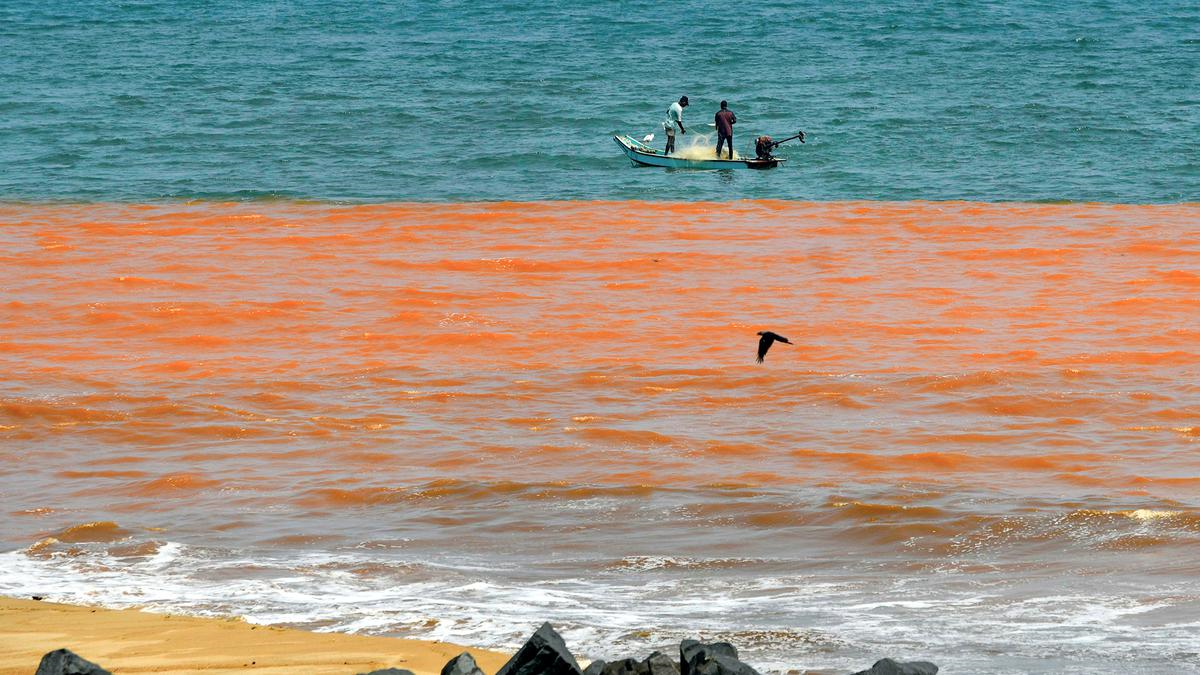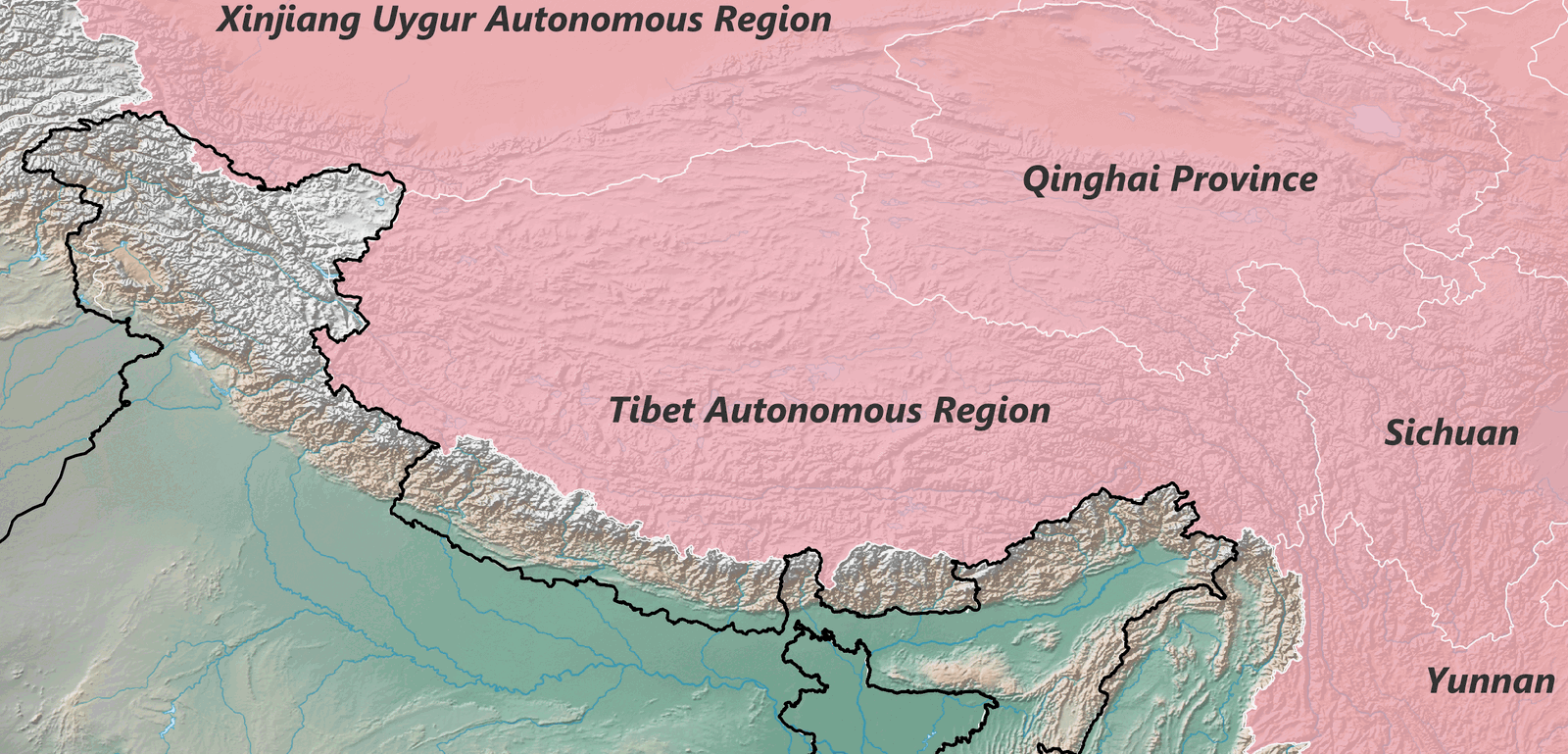
Aditya L-1 Mission, L1 (Lagrange 1) Point, Halo Orbit
Subscribe to Never Miss an Important Update! Assured Discounts on New Products!
Must Join PMF IAS Telegram Channel & PMF IAS History Telegram Channel
- Context (IE | IE | TH): ISRO has performed a trajectory correction manoeuvre (TCM) on the Aditya-L1 spacecraft, which is headed to the Lagrangian 1 (L1) point.
- TCM ensures that Aditya L-1 is on its intended path towards the Halo orbit insertion around L1.
|
|
Aditya L-1 Mission and its Journey to Its Destination
- India’s first solar observatory mission, Aditya-L1, was launched by the Polar Satellite Launch Vehicle from the Satish Dhawan Space Centre in Sriharikota.
- Aditya-L1 spacecraft will be inserted into a halo orbit around the L1 point of the Sun-Earth system.
- It will be placed about 1.5 million km from the Earth (covering only 1% of the distance between the Earth and the Sun).
- It will collect data for five years by continuously observing the Sun.
- ISRO will become the third space agency after NASA and the European Space Agency (ESA) to place an observatory at the L1 point between the Earth and the Sun.
L1 (Lagrange 1) Point


- A Lagrange point is a point in space where the gravitational forces of two large bodies (such as the Sun and the Earth) balance the centrifugal force experienced by a smaller object (such as a satellite) allowing it to remain ‘fixed’ in relation to the larger bodies.
- For any two celestial bodies, there are five Lagrange points (L1 to L5).
- Of the five Lagrangian points between the Earth and the Sun, there are:
- Three unstable points (L1, L2, & L3): Objects placed at these points, if disturbed, will drift away and so require constant adjustments to stay in position.
- Two stable points (L4 & L5): Objects at these points orbit around these points and not drift away.
What is Halo Orbit?
- A spacecraft can orbit around an unstable Lagrange point with a minimum use of thrusters for stationkeeping. Such an orbit is known as a halo orbit.
- It is differen from a usual orbit (like the orbit of Earth arounf the Sun) because the unstable Lagrange point doesn’t exert any attractive force on its own.
Why Halo Orbit of L-1 Point is Chosen for Placing the Aditya L-1 Spacecraft?
- A satellite placed in the halo orbit around the L1 point can continuously view of the Sun without any occultation/eclipses.
- Every geomagnetic storms from Sun that heads towards Earth passes through L1, and so, a satellite placed in the halo orbit can track these storms and predict their impact.
- Satellites placed at Lagrange points can remain in a fixed position with minimal fuel consumption.
- These points are the ‘parking spots’ for spacecraft
|
How will Aditya-L1 Reach the Halo Orbit Around the L1 Point?
- Aditya L1 was launched from Sriharikota to Low-earth Orbit. It stayed in Earth-bound orbits for 16 days, undergoing orbital adjustment maneuvres to leave Earth’s Sphere of Influence (SOI).
- Subsequently, Aditya-L1 underwent a Trans-Lagrangian1 insertion (TL1I) manoeuvre, marking the beginning of its 110-day trajectory to the destination around the L1 Lagrange point.
- After the TL1I, ISRO found the trajectory errors that needed correction. So, TCM was performed.
- Upon arrival at the L1 point, another manoeuvre will bind Aditya-L1 to a Halo orbit around L1 (a balanced gravitational location between the Earth and the Sun).
|
|
For details on Aditya L-1 Mission > PMF IAS CA September, 2023




![PMF IAS Environment for UPSC 2022-23 [paperback] PMF IAS [Nov 30, 2021]…](https://pmfias.b-cdn.net/wp-content/uploads/2024/04/pmfiasenvironmentforupsc2022-23paperbackpmfiasnov302021.jpg)










